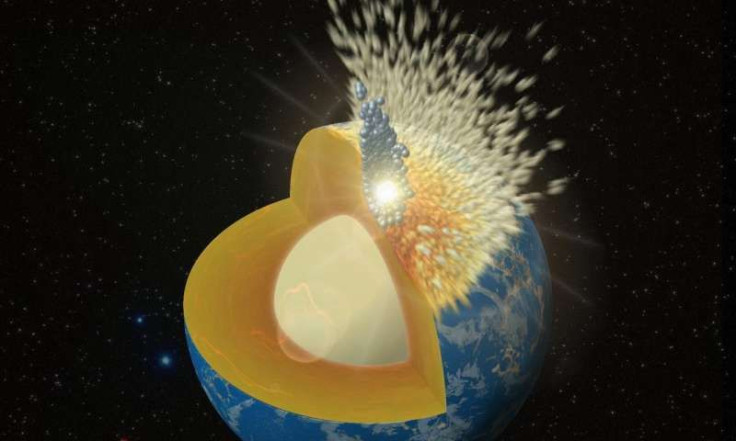NASA Simulates Early Earth Collisions Which Gave Us Gold

Much information about the Earth's formation and evolution is still a mystery. Scientists stumble upon ground breaking discoveries and study widely accepted theories everyday to learn new things about our planet’s past, present and future.
Now, a study has shown that a large moon-sized planetary body collided with Earth and then penetrated all the way to its core right after the moon’s formation more than 3.8 billion years ago.
The significance of this collision, scientists say, stems from the fact this led to the formation of precious metals such as gold and platinum on our planet.
The team of researchers from Southwest Research Institute, Boulder, Colorado, and University of Maryland studied the collision in great detail to determine its effects on the Earth’s evolution.
The team looked to estimate the total amount of matter delivered to Earth via this planetary rock and also study the period during which this collision occurred.
It was found that the amount of matter delivered may have been two to five times greater than previously thought.
"These results have far-reaching implications for Moon-forming theories and beyond," said Simone Marchi of Southwest Research Institute in a press release by NASA, which also released an awesome simulation that showed the time lapse of the collision and how it changed the Earth.
"Interestingly, our findings elucidate the role of large collisions in delivering precious metals like gold and platinum found here on Earth," Marchi added in the release .
via GIPHY
About 3.8 billion years ago, the number of rocks colliding with Earth and other planets was very high. These collisions have been established as the primary factor that set the chain of actions in motion for the formation of teh solar syatem. A recent report published by IBTimes said these type of collisions were responsible for water on Earth, and they stemmed from Jupiter!
It is widely established that the early Earth experienced a long period of space impacts that diminished only about 3.8 billion years ago. These impacts peaked right after the moon's formation before it started diminishing. This period, called "late accretion," had a lot of these bodies, known as planetesimals, colliding with the Earth.
According to the release, the collisions during this period embedded extensive amounts of metal and rock-forming minerals into the Earth's crust.
The study estimated that 0.5 percent of Earth's present matter was added during this stage of planetary evolution in the form of noble metals and metals in general.
A study of mantle samples showed certain trace of elements such as platinum, iridium and gold. These metals usually bond chemically with metallic iron found in the core. But, their numbers were much higher in the mantle which pointed to an external source.
The team used NASA data and equipment to help simulate the collision that brought about our planet's bling. The high-resolution impact simulation shows parts of a large planetesimal's core that penetrated all the way down below the Earth’s crust. It went so deep that it merged with our planet’s core. Another possibility is that this planetesimal bounced back into space and escaped entering the planet entirely.
The study was published in the journal Nature Geoscience and the team used NASA Exobiology grant and NASA’s Solar System Exploration Research Virtual Institute, or SSERVI to make the simulation.
© Copyright IBTimes 2024. All rights reserved.











